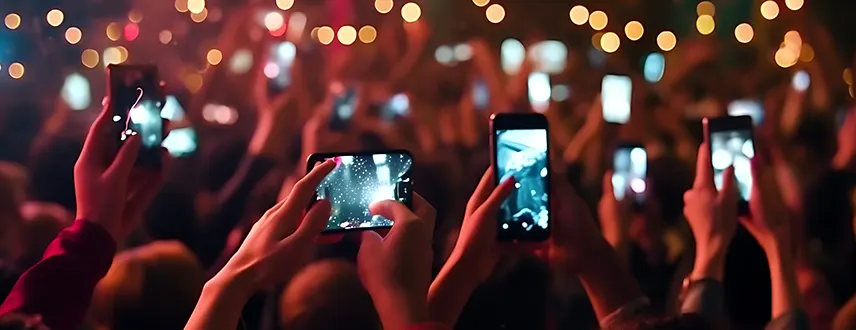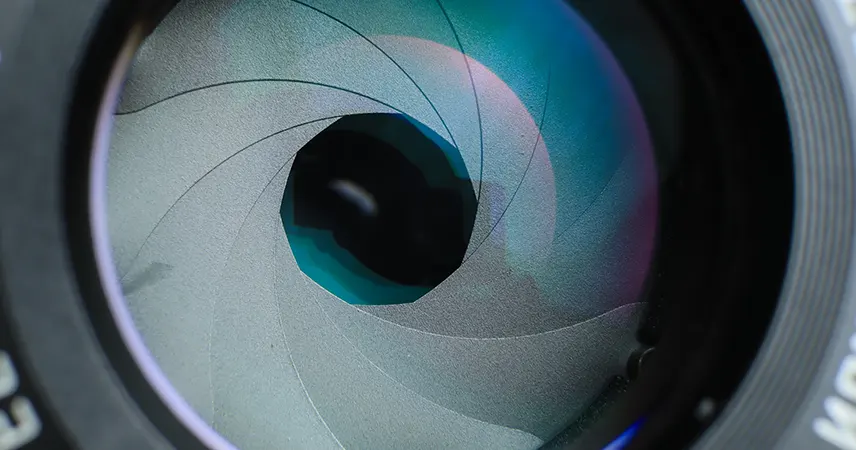Event Photography Tips: Cameras & Care
 By Jonathan Owen
By Jonathan Owen Marketing Manager
Published
6th February 2024
Last modified 31st July 2024
Last modified 31st July 2024
loveit? shareit!

With event staging, decor, and venues becoming more impressive by the year, and everyone snapping away on their phones, there is a growing community of amateur photographers that demand more from their cameras to take their event photography to the next level. As an experienced event photographer myself, I’m happy to share some tips regarding cameras, lenses, and what really makes a difference when it comes to getting the shots you want at the next party, festival, concert or wedding you attend. In this article, I’ll run through some tips both in regards of the best cameras for event photography, and also getting the best results from the kit you may already have whilst keeping it safe.
A good camera can make a world of difference to your photos, what might look good on a phone screen sometimes doesn’t translate well to a print or even a tv/pc monitor. There’s also the life of your camera battery to consider, which isn’t the best when your camera also happens to be your phone/messaging platform and your lifeline. A dedicated camera also tends to be more rugged and easier to hold when taking photos. With that in mind let’s dig into what event photography is and the key things to keep in mind when looking at camera options as well as some tips.
Event photography can be tricky at the best of times, the human elements of timing, distance, angles and dealing with any problems (other people come to mind!) that might prevent you from getting that shot. Semi-professional cameras have optical zoom (as opposed to a mix of optical and digital zoom that phones offer), which means that when you zoom right into your subject you won’t get any noise such as pixels that have been magnified by digital zoom. Digital zoom essentially crops and enlarges the image from the camera’s sensor, leading to a loss of detail and potentially resulting in a pixelated or blurry image. In contrast, optical zoom uses the camera’s lens to physically move closer to the subject, preserving the image quality and detail without degradation. Cameras also have the luxury of real estate, so bigger sensors to capture light with, bigger lenses to let that light in. Another benefit of a camera, especially when it comes to getting that shot at a wedding, is manual controls at your fingertips. These give you the ability to switch modes, adjust settings to compensate for lighting, and zoom in or out without the need to pause and work through menus. So whereas phone cameras are a great way to get into photography, dedicated cameras can take it to the next level and give you the control and quality that will really make your event photos pop!
Budget is certainly a consideration for this budget friendly guide, I’ll focus (excuse the pun) on cameras between £1000 and £2000, which I feel is the middle ground between a high end camera phone and a professional camera. Here are some of the features I would look for when choosing a camera, and don’t forget to check second hand cameras, some of the professional and semi professional cameras are built to last so shouldn’t be discounted.

Events quite often have a varying range of lighting conditions, weddings for example can be outdoors in the sunshine one moment and in a dimly lit church the next. Having a camera that works well in low light can prevent the photos from being blurry (a less capable camera keeps the shutter open longer to allow in more light, meaning any movement of either the camera or subject matter can produce a blur), another way a camera can compensate is by increasing the ISO/sensitivity of the sensor, however this can cause “noise” in the image. You may consider a flash but this can flatten the image (by all the light coming from one source), or actually not be allowed in a venue such as a church. What you need to look for is a camera that has a large sensor, APS-C or Full Frame for example, and a high ISO range with good noise reduction capabilities. The lens will make a huge difference too, a wide aperture (f/2.8 or larger, which is actually a smaller number such as f/1.8, f/1.4 etc) will allow the camera to let in more light in less time, however lenses that offer these larger apertures can be quite expensive, one that goes against this trend is the “nifty fifty” a Canon 50mm lens that is well known for its great low light performance at an impressive price of £114 at time of writing.
Event photography often involves capturing a blend of wide shots, close-ups and details, and everything in between, sometimes from a fixed position due to space constraints or the nature of the event. Having a versatile zoom lens allows photographers to quickly adapt to changing scenes and subjects, ensuring no moment is missed. You should look for a zoom lens with a constant wide aperture (e.g., f/2.8) throughout the zoom range is ideal. It ensures that the amount of light entering the lens does not decrease as you zoom in, which is crucial for maintaining exposure consistency and performance in low light conditions. Image stabilisation is especially important for zoom lenses, as longer focal lengths increase the effects of any camera shake. A lens or camera body with effective image stabilisation is a game changer for achieving sharp images at high zoom levels. Weight is also a factor worth keeping in mind, getting that balance between a camera that is functional and one that is easy to carry is a must and a good zoom lens can also be heavy with a lot of glass and metal to move around.
As mentioned earlier, you want a camera that’s going to outlast your phone when it comes to taking photos if you want to improve your event photography and give yourself a worry free experience so you can focus on taking the photos. Cameras that offer a high number of shots per charge are what you’re after, also worth considering models you can charge from a power bank via usb to really extend that battery life if it comes down to it.
In the fairly rare scenario that you might really need it, image stabilisation can be a life saver. Handheld shooting is common in event photography, where using tripods may not be feasible. Image stabilisation helps reduce blur from camera shake in low light conditions or when zooming in over longer distances. Cameras with sensor shift, optical stabilisation or 5-axis stabilisation can compensate for any movement of your camera ensuring a steady shot in tricky conditions.
Most semi professional cameras are rugged, but not indestructible! Lenses especially can be prone to scratches on the glass, and are likely to suffer from some wear and tear through use. To keep your camera in good condition make sure you invest in:
You’ll need a blower, soft lens brush, microfiber cloth, and lens cleaning solution or isopropyl alcohol. Firstly remove any dust to avoid scratching the lens, use the blower to gently remove dust from the lens surface, avoid compressed air as it can damage the lens. Next brush off any particles; lightly brush away any remaining dust with a soft lens brush. Then apply some cleaning solution by moistening a corner of the microfiber cloth with the cleaning solution, never apply directly to the lens. Clean the lens in a circular motion from the centre outward gently using the cloth. Follow with a dry wipe to avoid any streaks. Don’t forget to clean the edges and rear element, if it’s accessible, using the same method. Afterwards inspect the lens to check you’re happy, if not repeat the previous steps. It is possible to overclean your lens, so only clean if you feel you need to.
It goes without saying when you’re using expensive camera gear that getting camera insurance is a great idea, ensuring you get the right coverage for the gear you want to protect. Event photography can present a multitude of potential dangers so as well as looking after your camera etc, having it covered by an excellent company such as loveit coverit (if I do say so myself!) is a great way to give you that additional peace of mind a camera strap doesn’t quite offer. Ensure you compare prices with other camera insurance providers, and if you are working make sure the policy covers you for using the camera for work purposes.
The landscape of event photography is always changing and evolving, with the bar set high by both professional camera setups and everyone having a smartphone camera in their pocket. Drawing from my own experiences, the leap from a casual snap to capturing events by taking things up a level can hinge on having the right equipment, hopefully these event photography tips give you a good idea of how to proceed. A dedicated camera does more than just take pictures; it captures high quality images with a clarity and detail that is currently not possible on a phone.
Focusing on cameras within the £1000 to £2000 range, we’ve explored how crucial features like low light capability, zoom range, and battery life are for anyone serious about event photography. Equally important is how you look after your equipment, ensuring it remains in top condition for every occasion.
And while the technical aspects are critical, protecting your gear through insurance is also well worth keeping in mind, providing peace of mind and allowing you to focus on the art of photography.
My journey as an event photographer has shown that with the right approach, you can elevate your photography, making every shot count. It’s a blend of skill, equipment care, and protection that sets the foundation for capturing those unforgettable moments, all while managing a budget effectively.